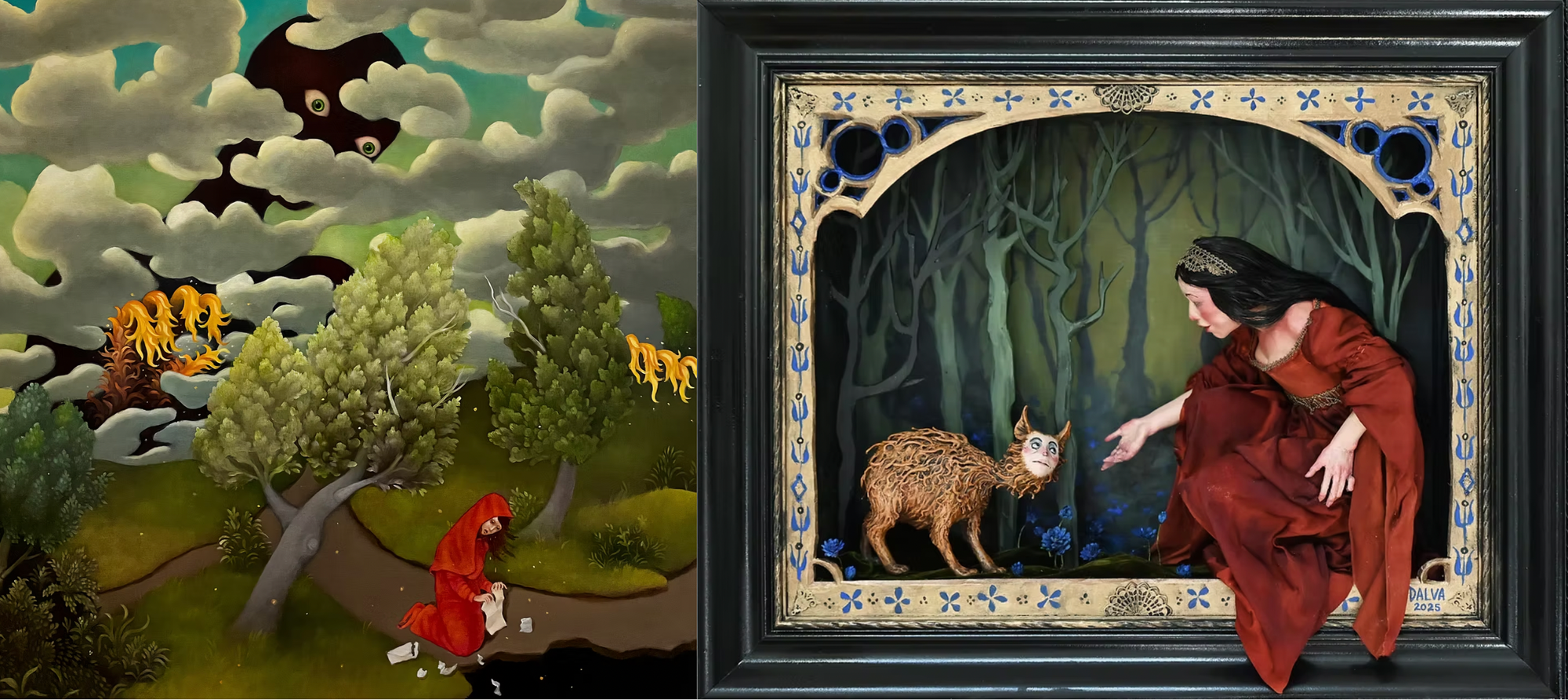"In The Grand Scheme of Things" and "Movies We Could Have Made"
Arch Enemy Arts
109 Arch St.
Philadelphia
Showing July 19 - Aug. 10, 2025
Seen July 20
In two disparate frames hanging inside Arch Enemy Gallery, red-robed women kneel on the ground. In one, the woman is a hooded martyr faced away from an oncoming windstorm. In another, the woman is a Snow White figure, crouching down to coax a monster closer.
The first is an oil painting by Alex Kuno titled “Guardian Angel Receives the Call.” The second is an inset diorama by Jessica Dalva with a cheekier name: “‘Tis but a Little Guy.”
These incidentally intersecting but opposing stories are part of two separate exhibits titled “The Grand Scheme of Things” and “Movies We Could Have Made.” Seen together, the shows work in tandem to encapsulate the challenges of representing life’s bigger picture.
What’s strange about the independent shows is that they share a psychically cinematic focus. Where Kuno zooms out, Dalva zooms in. Kuno looks at landscapes and context; Dalva studies characters and their immediate environments. Both artists build fantasy worlds inspired by movie magic. The result is like a series of magical realism film stills.
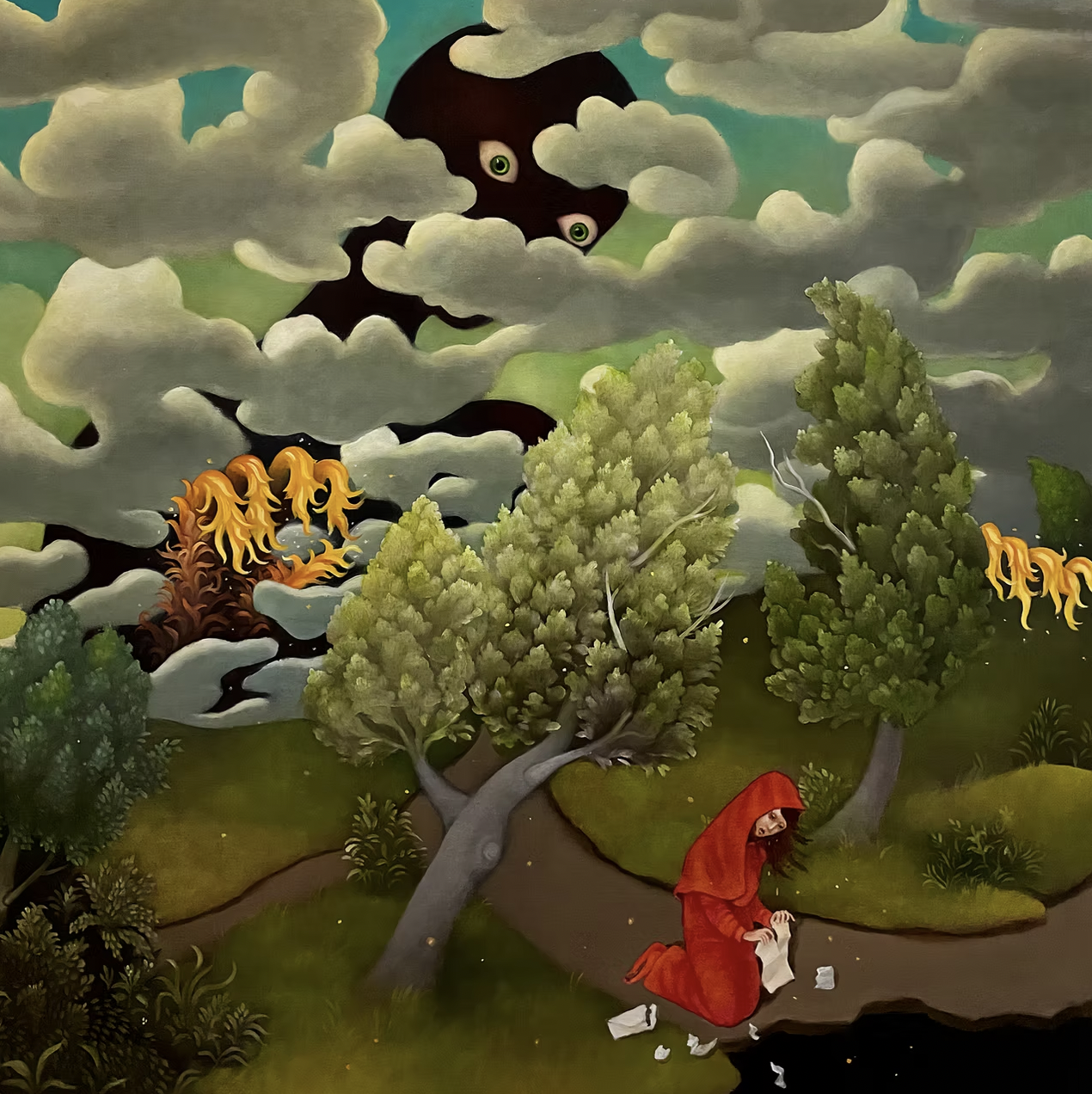
“Guardian Angel Receives the Call,” for example, personifies the grandiosity of natural disaster through biblical terms. The scarlet-caped woman represents the flame of the holy spirit and human consciousness, tearing up a paper letter on the edge of the earth, unknowingly feeding a fiery devil poking through stormy, soot-shaped clouds. The painting is bordered by trees, sidewalk and sky — as well as by life, death, heaven and hell.
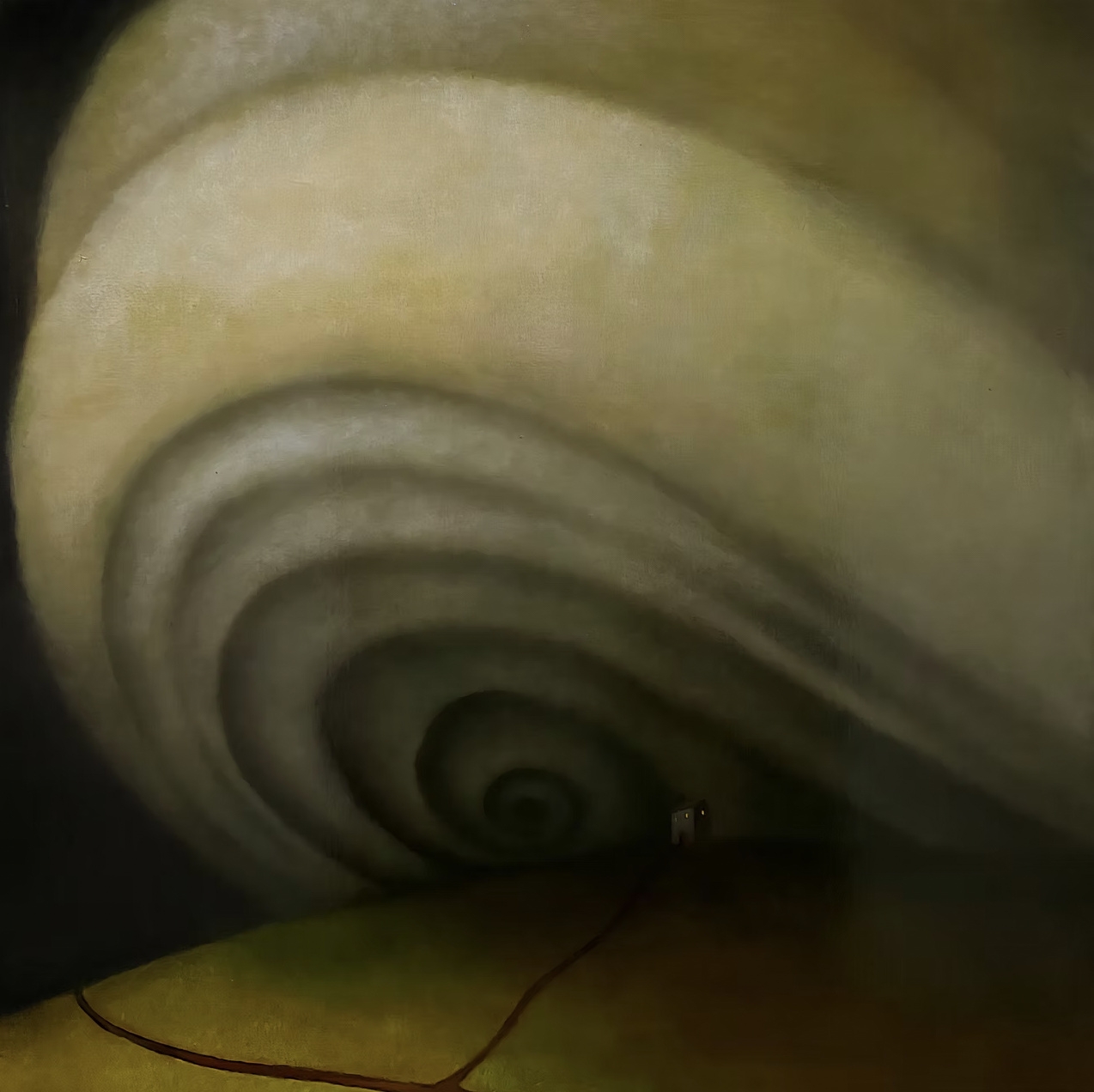
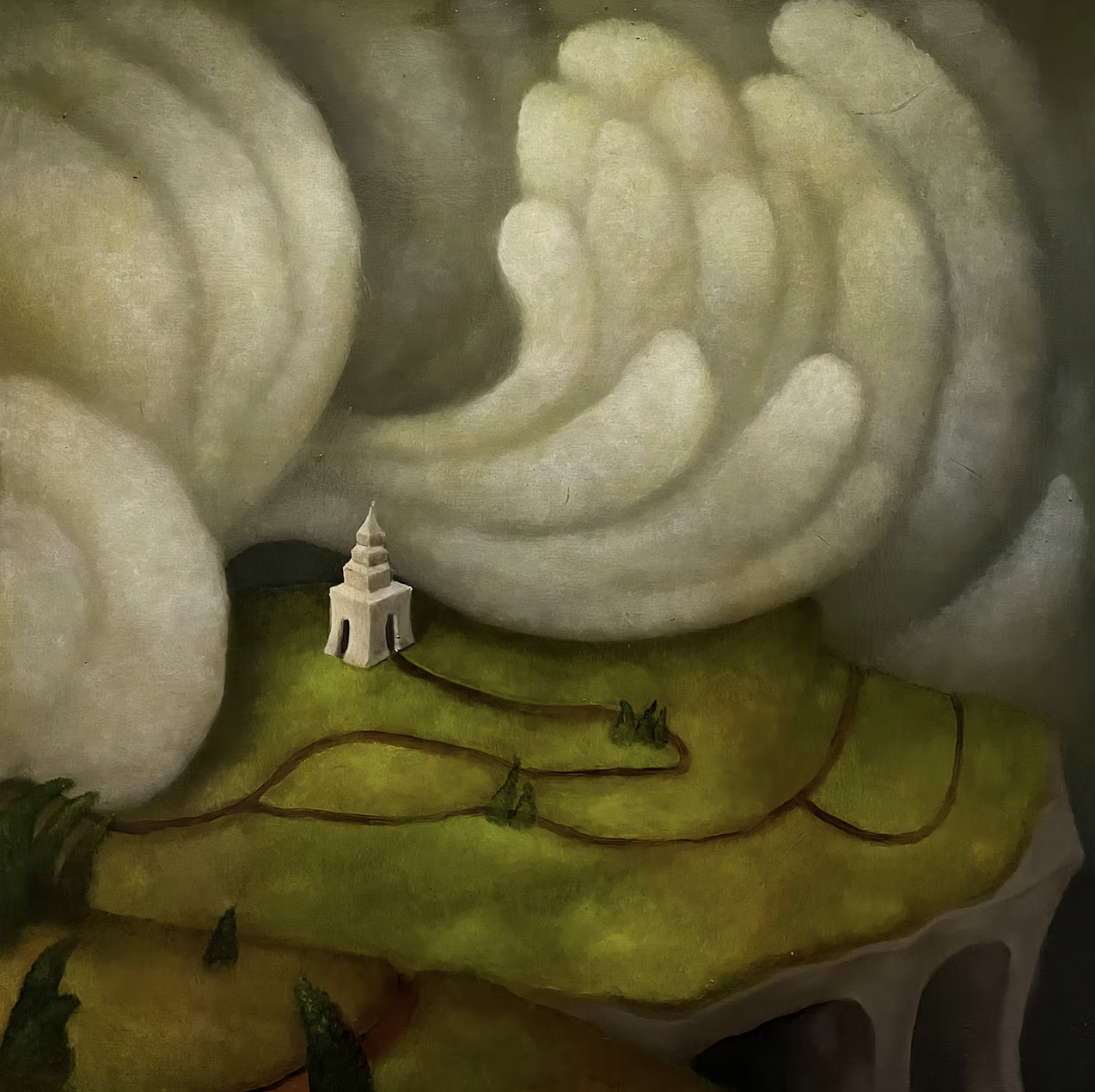
This is one of Kuno’s more referential paintings. In other scenes, he paints distant structures swallowed by massive tempests, as though capturing the distant marvel of storm chaser flicks. For mere mortals, it’s nearly impossible to look into the eye of a storm without either sacrificing our lives or looking at a representation of it. Kuno equates this reality with the evolutionary theory of “prospect-refuge,” which asserts that humans are implicitly drawn to environments that offer room to both hide and seek — to access shelter and scan their surroundings for potential resources. Metaphorically, this hits on our psychological desire to curl into ourselves and the minutia of our modern existences — while simultaneously searching for answers to the broader forces that govern our lives, whether through religion, scientific research, or art.
“When I set out to work on this series, I wanted the paintings to be about symmetry, order, and timelessness, an exploration of the ‘prospect-refuge’ theory with massive, sweeping landscapes that also provide the audience little places of escape in a world that feels overwhelming. But as I developed these compositions, the real world seeped in …The landscapes began to feel sentient, with their own motives and trajectories, while the figures became transitory at best. Perhaps the show is an exploration of the inability to wrap our heads around the overwhelming ‘bigness’ of the calamities we all face, while maintaining some sort of peace and hope. It’s our lot as humans to never understand the world or our place in it, and in THE GRAND SCHEME OF THINGS, everything is absurd and transitory,” Kuno reflects in his artist statement.
Whereas Kuno’s work is informed by faraway theses of human behavior, Dalva’s is driven by personal experiences: “The initial inspiration from this series stemmed from the unexpected loss of my father in 2023. He was a film editor and director, and movies and the discussion of them was always a staple in our family. I had always imagined making or contributing to a movie with him someday, so these pieces are little portions of concepts pulled from the film vault that never was.”
Dalva constructs small sets and character studies that could fit within the forests and fields seen from Kuno’s bird’s eye views.
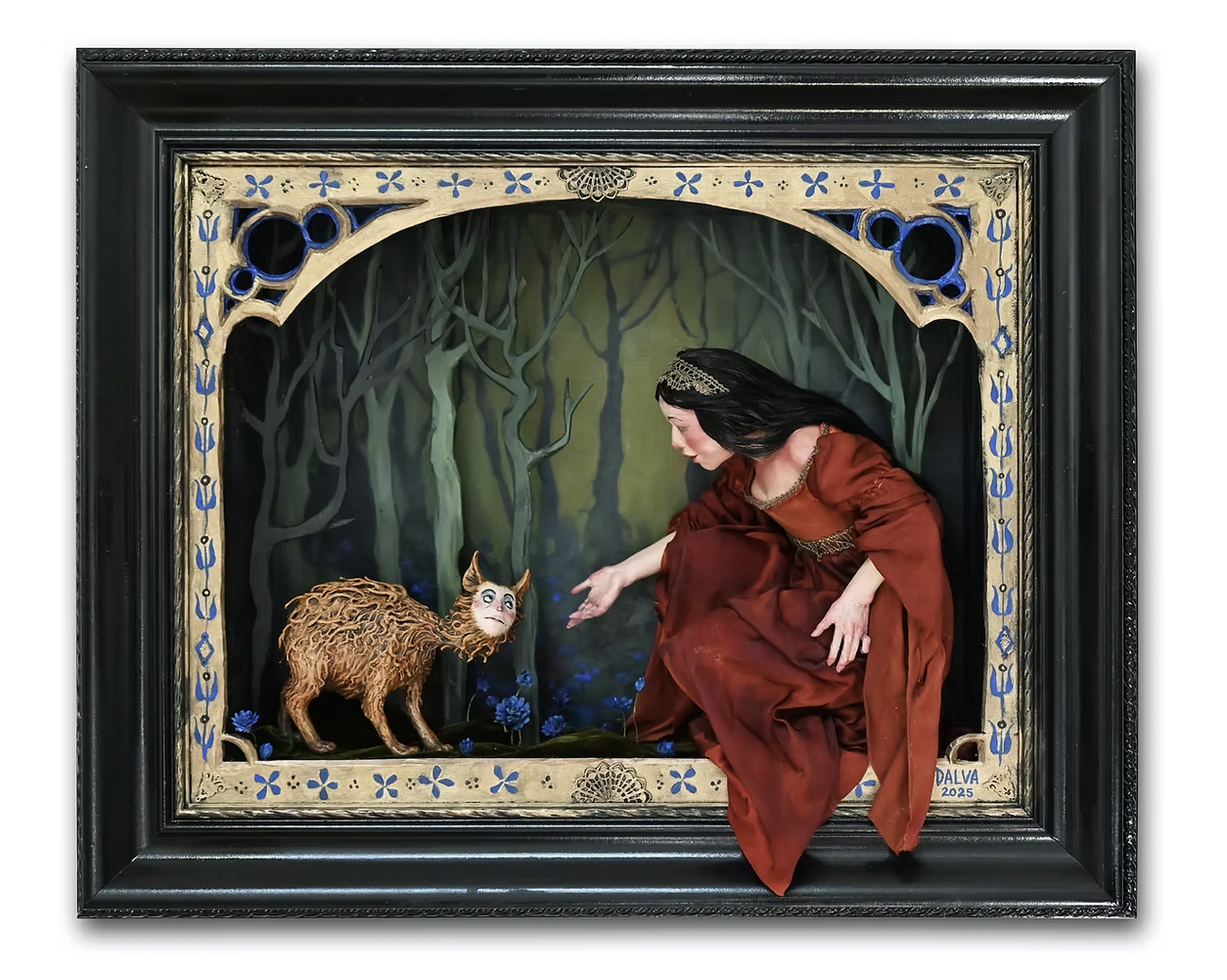
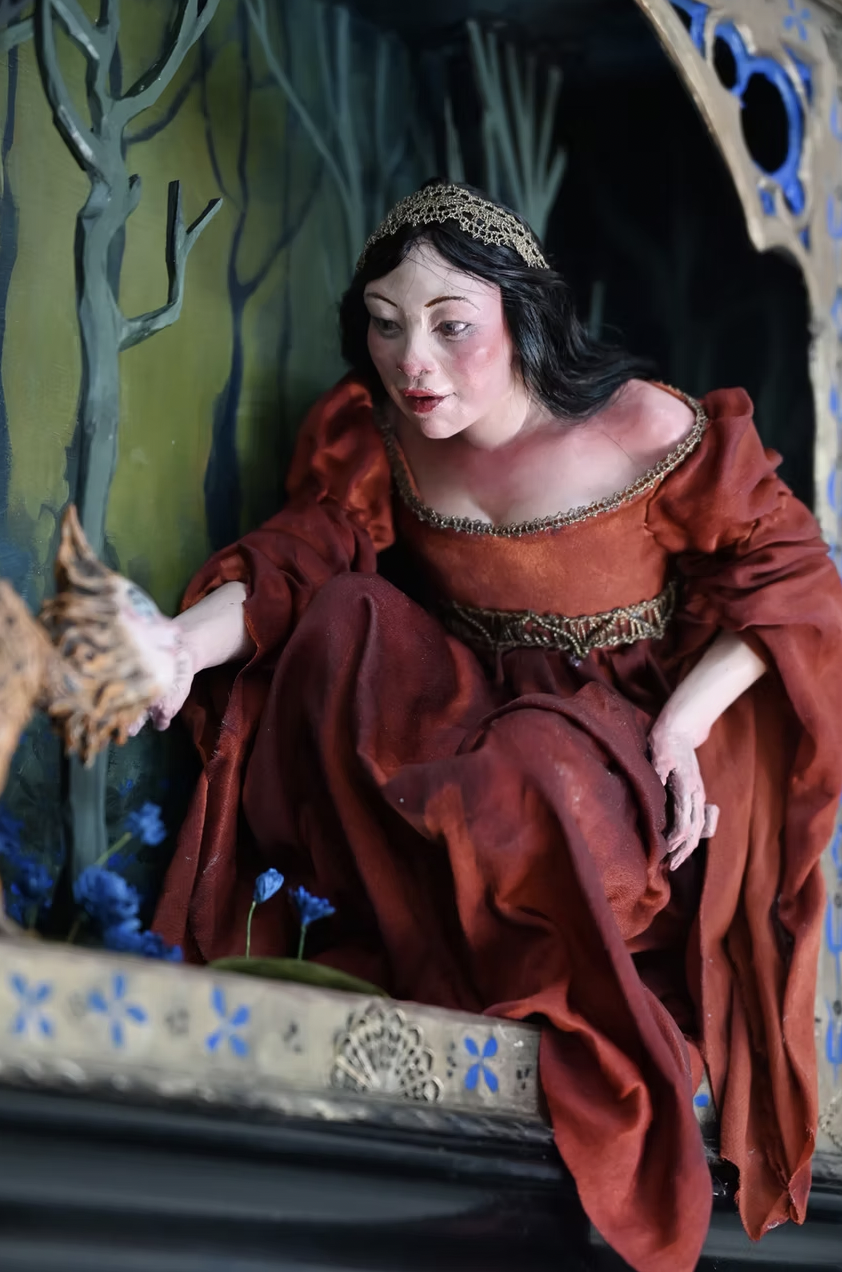
“‘Tis but a Little Guy” is less literary than it is lore. It's a testament to the type of female figure who can look any ostensible evil in the eye and release its softer side. Compared to Kuno’s flat observations of human ignorance, Dalva’s works are three-dimensional displays of human wonder and invention.
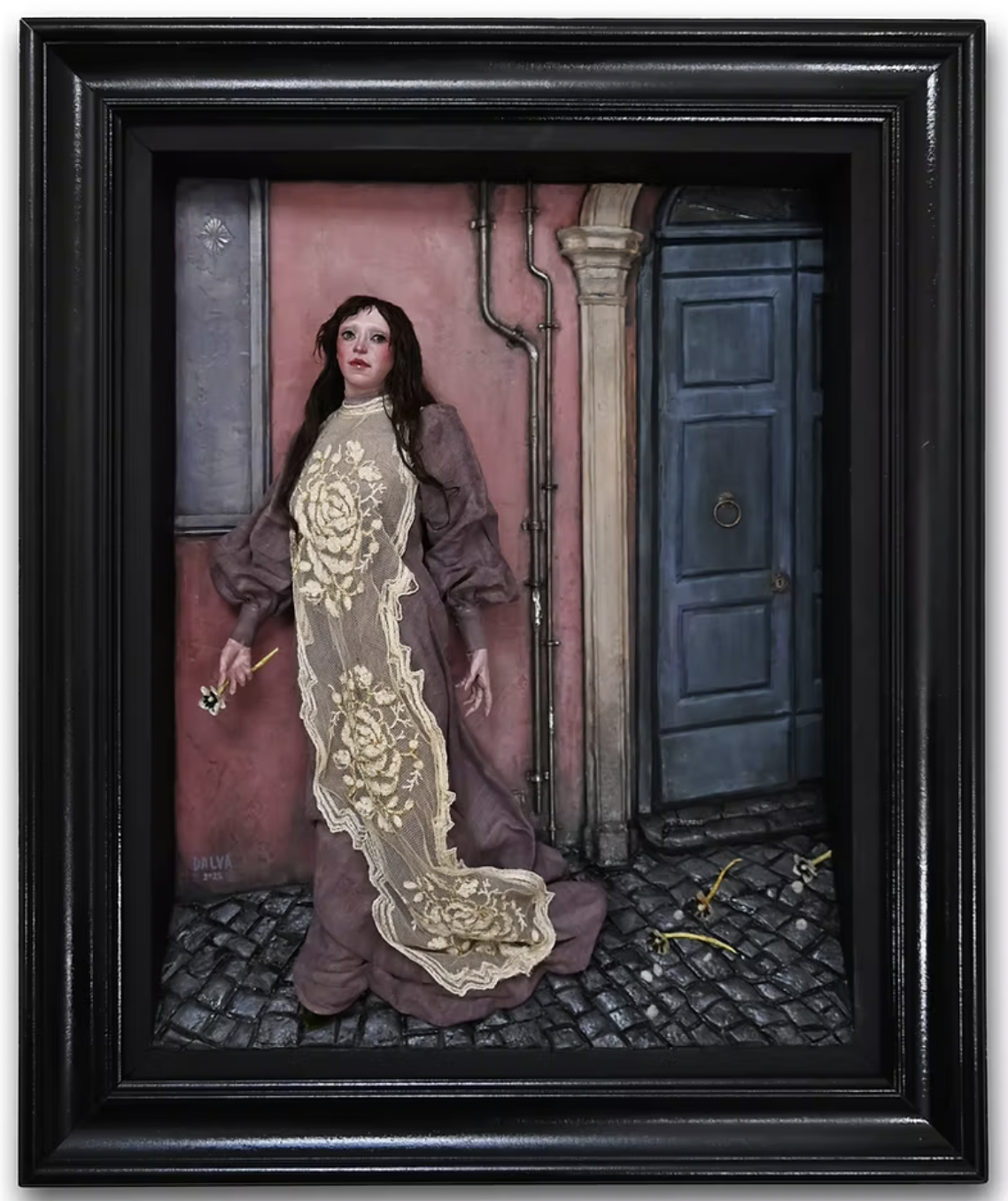
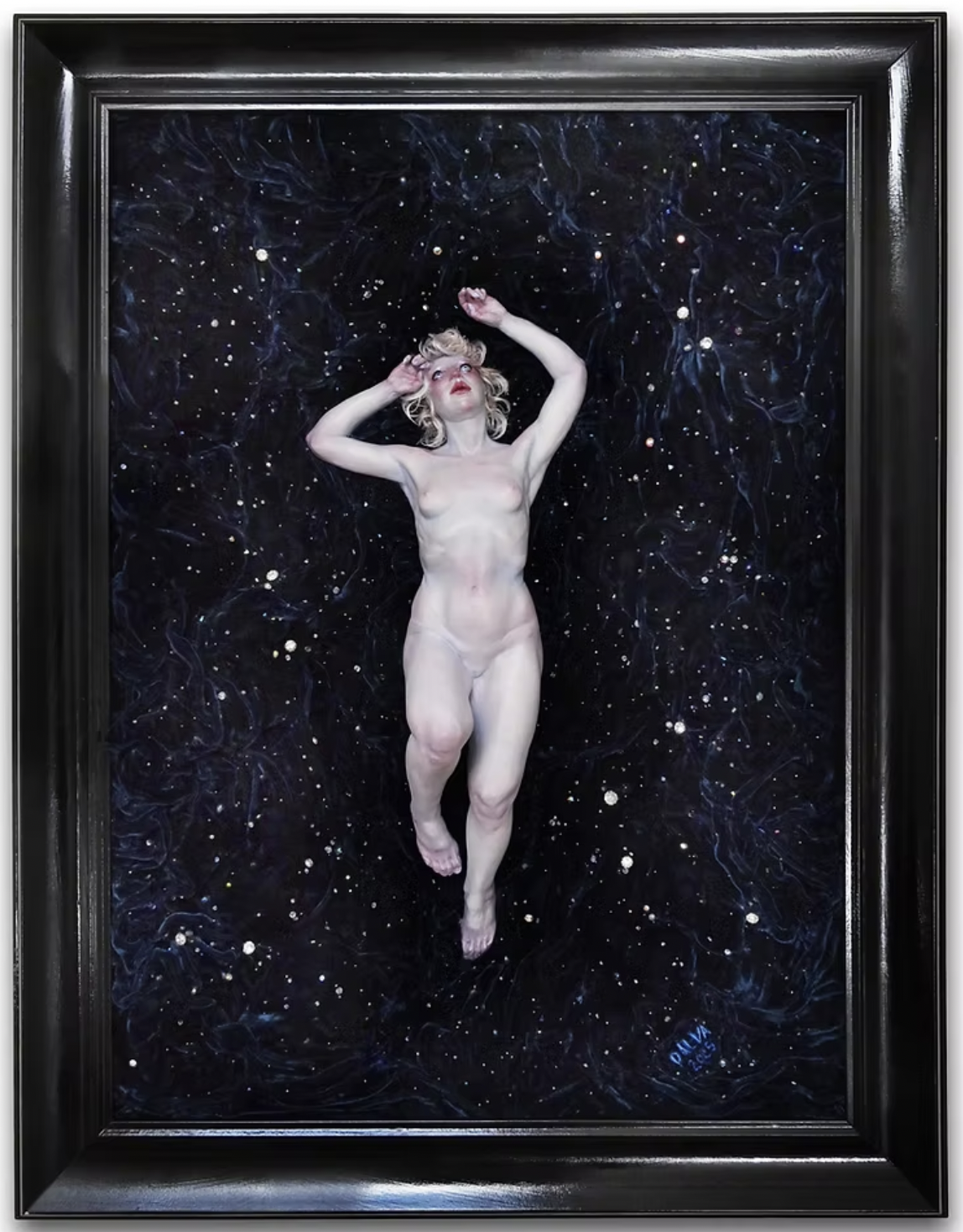
In her other works, she uses realist painting techniques and real world materials to mirror the literal element of live action movies.
Take “Il Corso,” which translates to “the course” of life, in which an acrylic portrait of a 17th century Italian woman wears a dress made of fabric and lace while shedding tiny faux flowers in her wake.
In “Star Field,” a naked Marilyn Monroe type stares into a milky way made of rhinestones and antique glass beads stitched onto blue velvet. These visions establish Dalva as a set and costume designer as much as a painter; her stationary art is an ode to moving pictures’ power to document and reiterate our material truths as much as our imaginary ones.
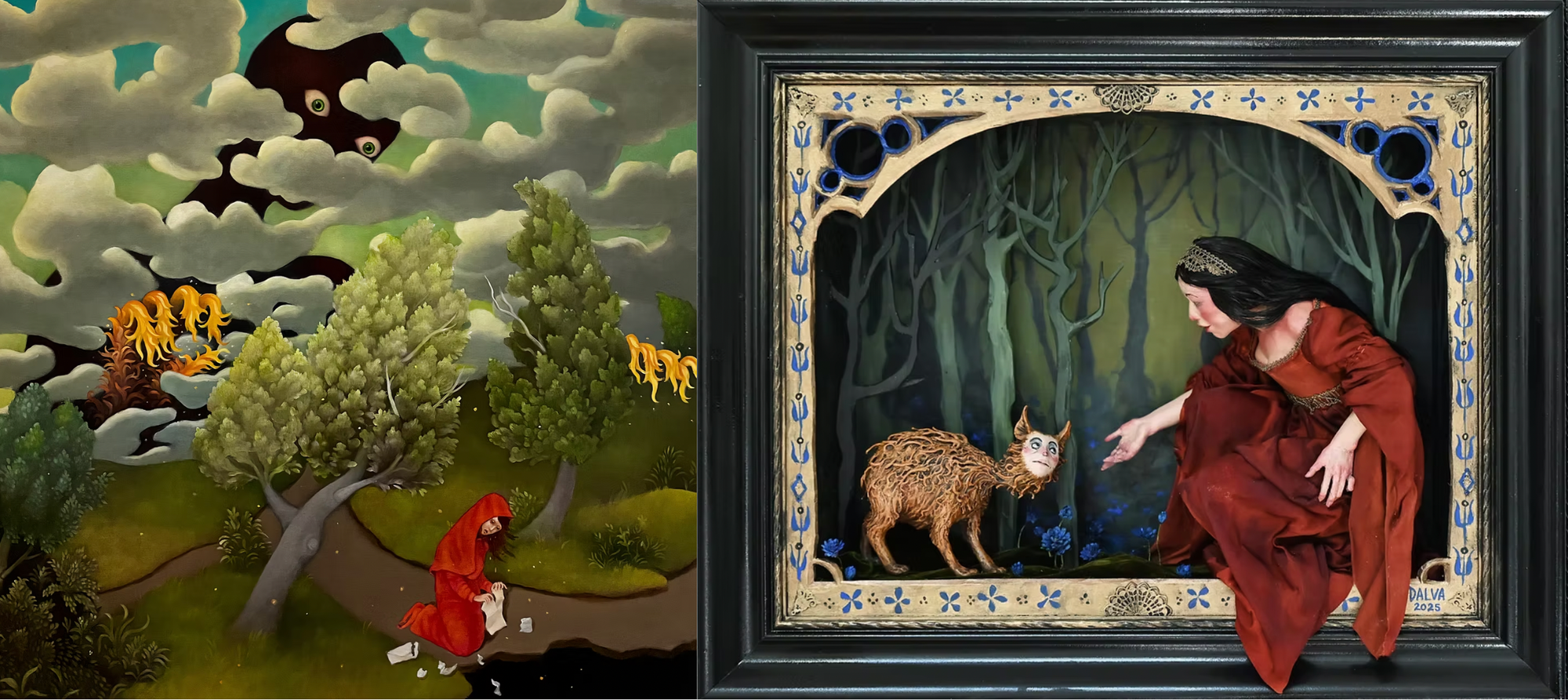
The conjoining crux of these two exhibits is the lady in red, a loaded symbol that has stood for love, seduction, tragedy, ghostliness, and redemption since the start of human civilization. Just check out this article taxonomizing famous red dresses across centuries of art history.
In their respective magnum opuses, Kuno and Dalva position themselves as directors. They use visual art not as a static means of self-expression, but as a way of doing what great film does right: Styling a narrative of control over life’s kinetic energy.
